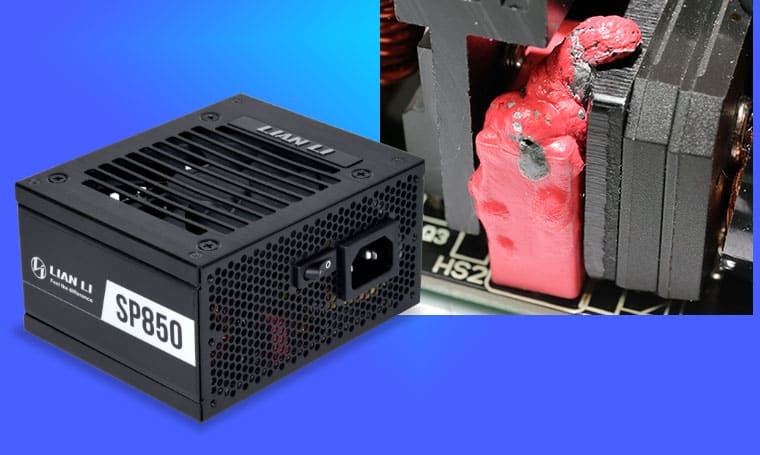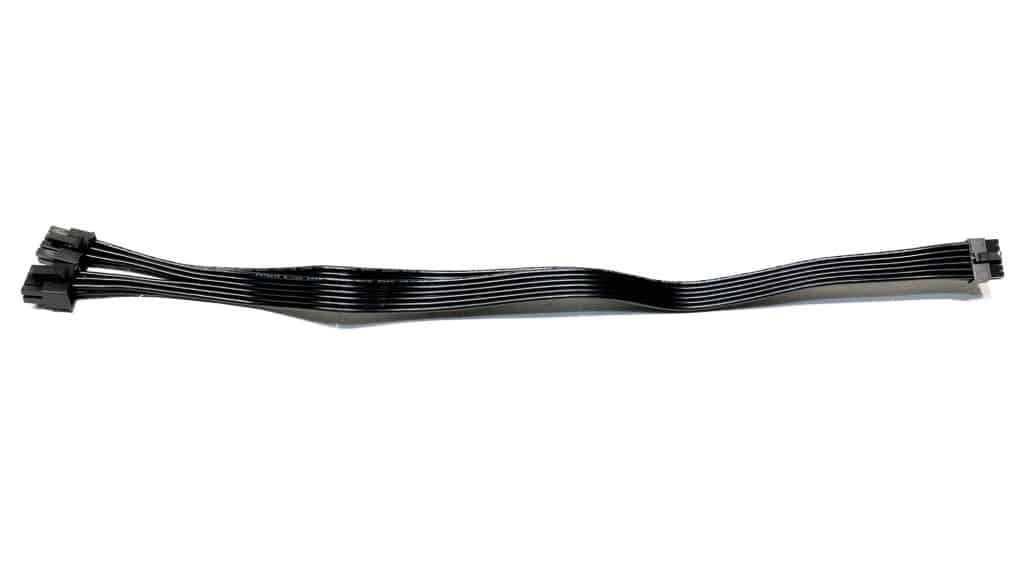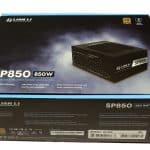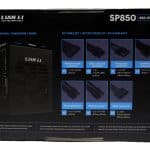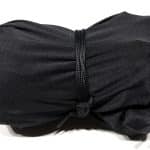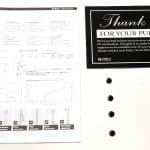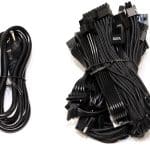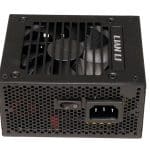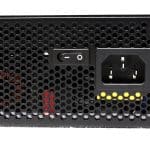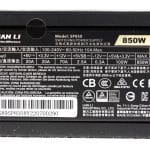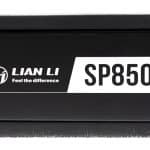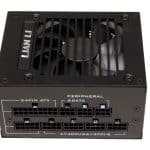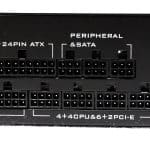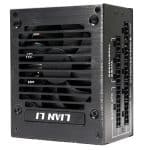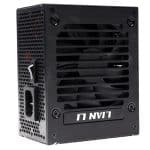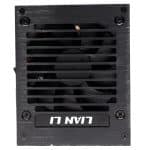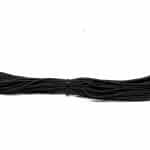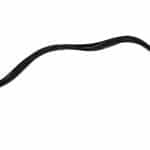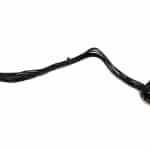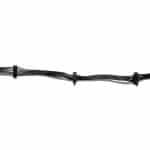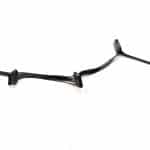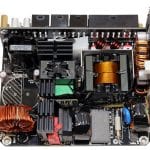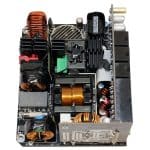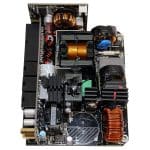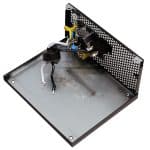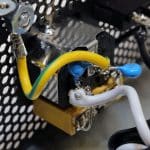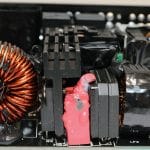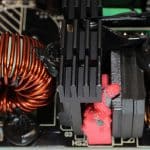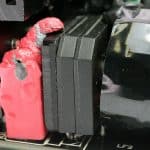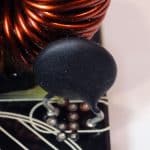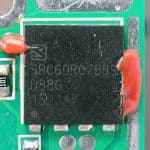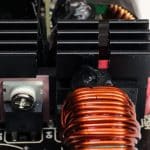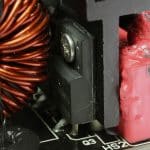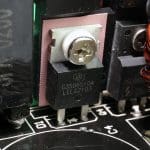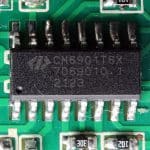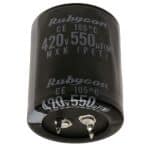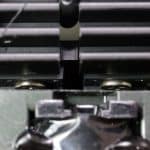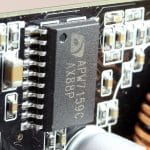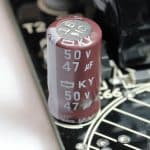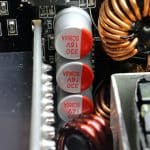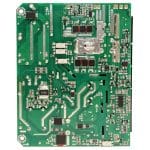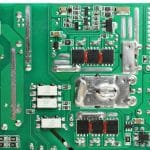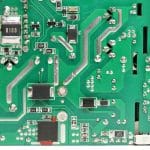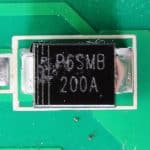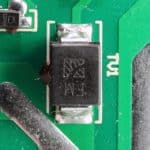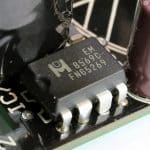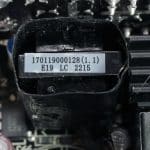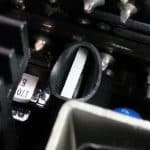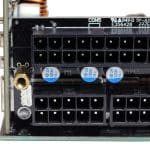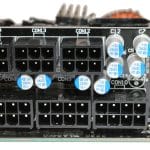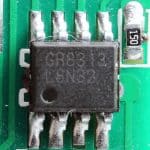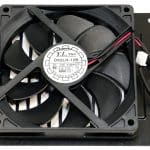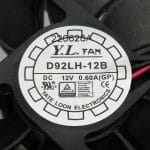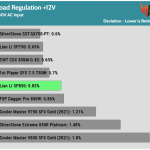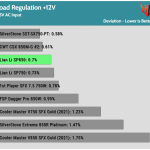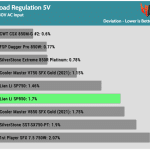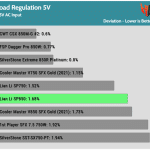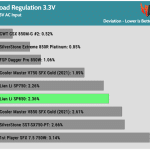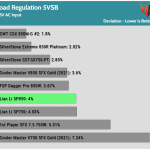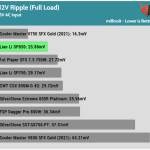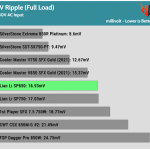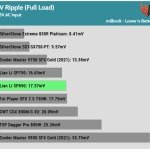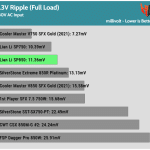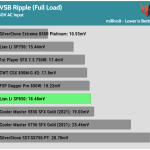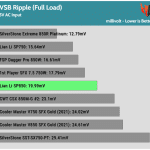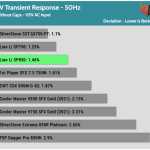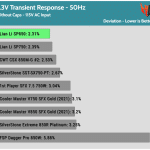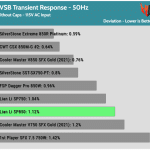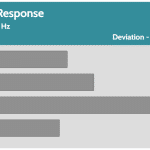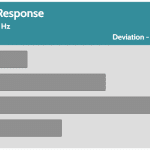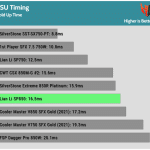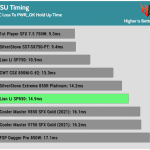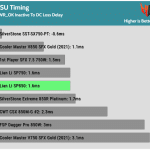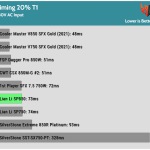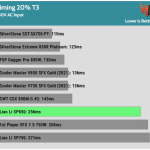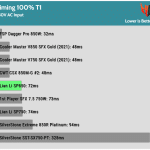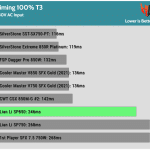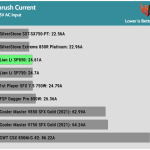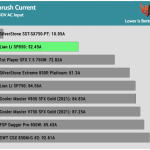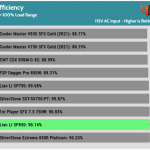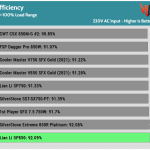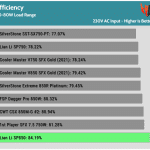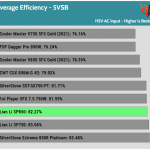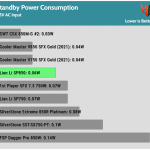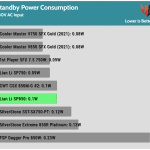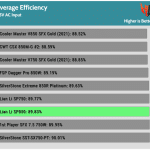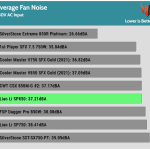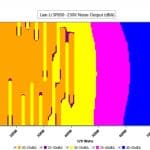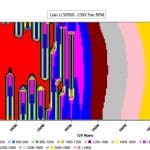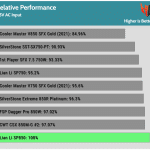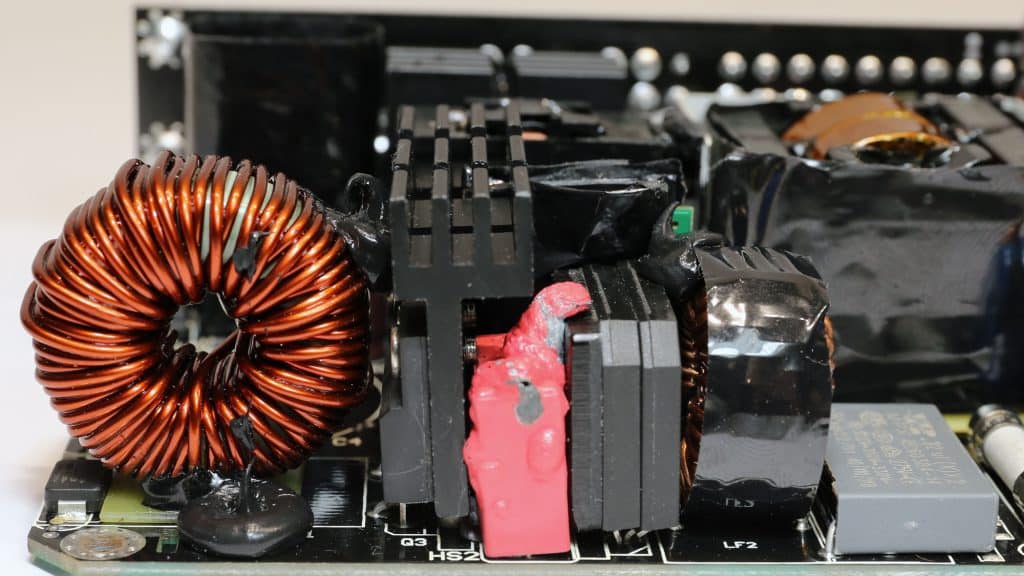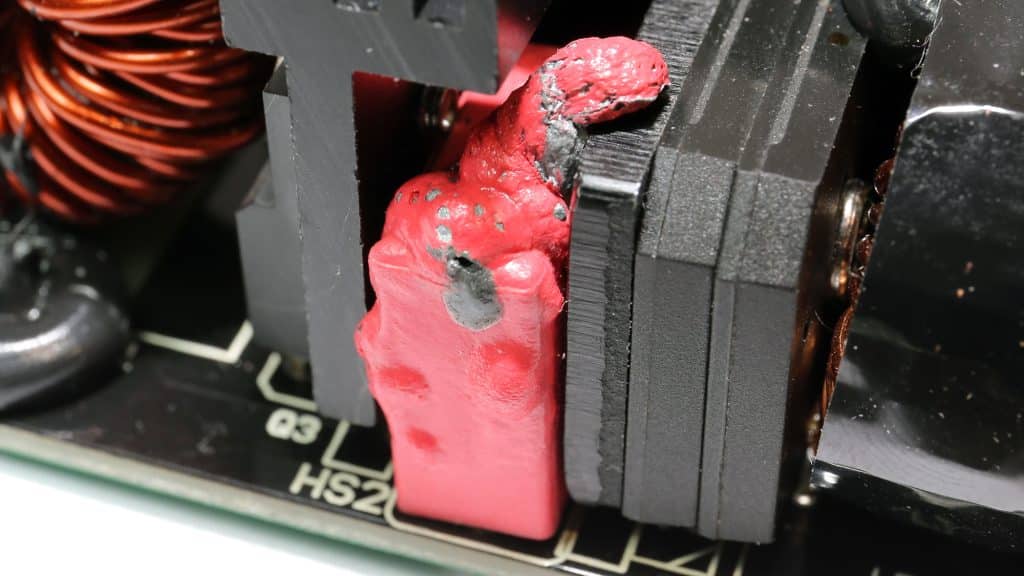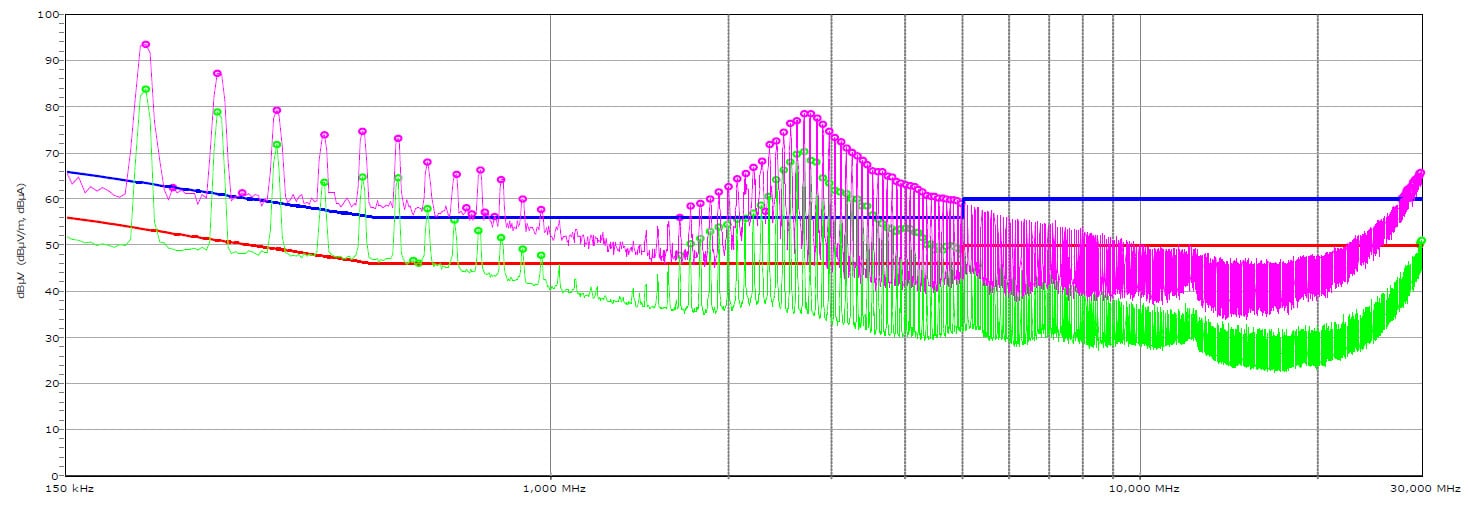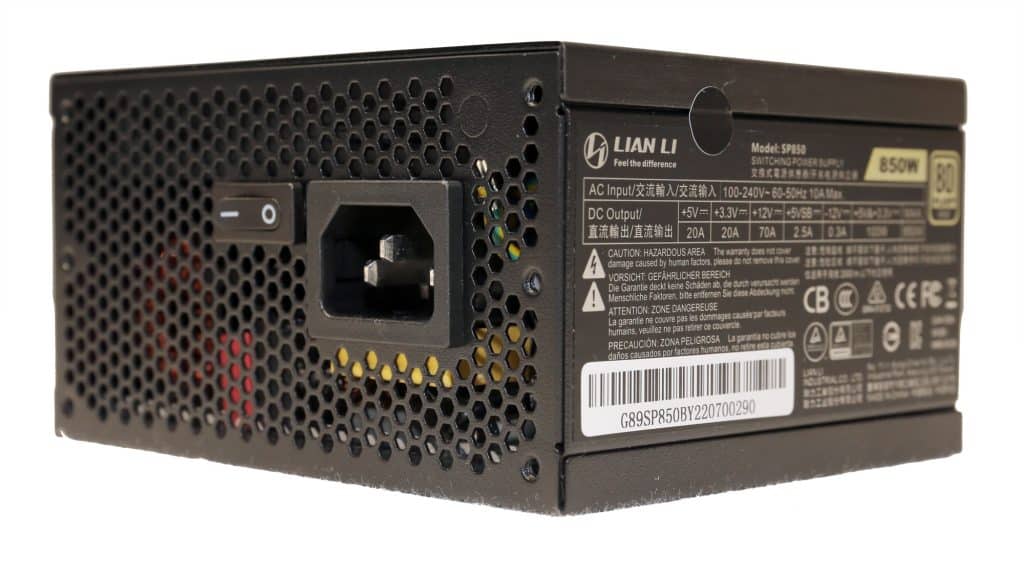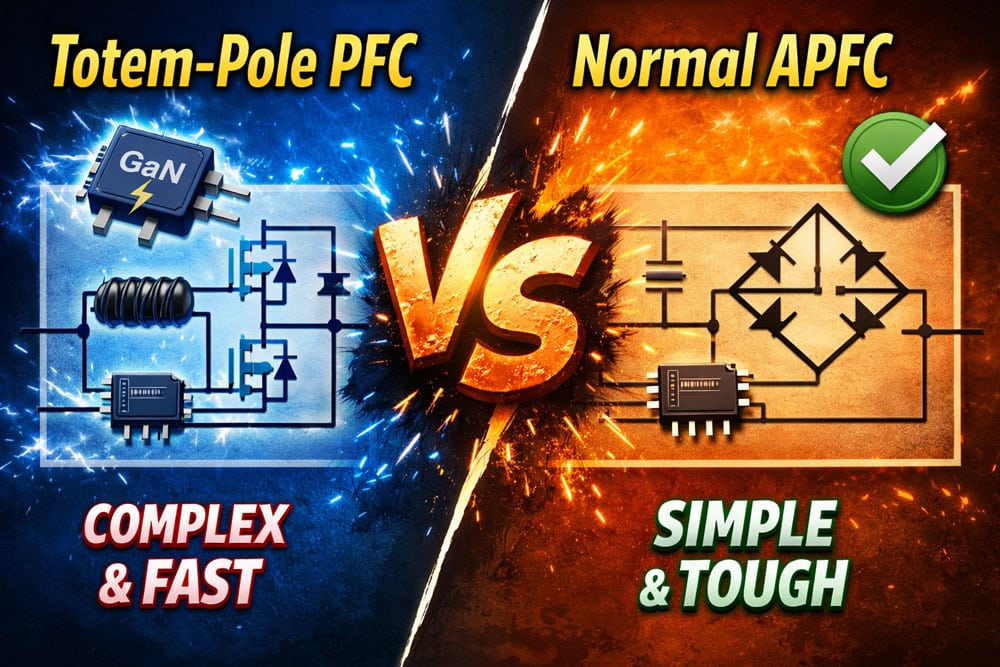The Lian Li SP850 PSU was released before the mass adoption of the 12+4 pin PCIe connector, offering a 12 pin connector, lacking the extra sideband signals which are required by the NVIDIA RTX 4000 series graphics cards. Nonetheless, it is fully compatible with the previous NVIDIA RTX 3000 generation and the upcoming AMD GPUs, which will use 6+2 PCIe.
Lian Li has two PSUs in its portfolio, both SFX, with 850W and 750W max power. I have already reviewed the latter at Techpowerup, and today I will evaluate the SP850, which Helly Technology also makes. For those of you who haven’t heard of Helly before, you might have heard of its retail brand, 1st Player.
The unfortunate thing about the SP850 is that it doesn’t have a 12+4 or 12+2 PCIe connector, but a plain 12 pin which is not compatible with the NVIDIA RTX 4000 series since it lacks the sideband signals. Lian Li could offer compatibility by simply taking ground from the PSU and transferring it to one of the side-band signals. Let’s take a look at the following scheme first to show you what I mean.
If the RTX 4000 series doesn’t find any of the Sense 0/1 signals, it will only operate at 150W max, so it will be heavily crippled. By grounding both Sense signals, you get the full 600W. The SP850 feeds its 12-pin cable from two 8-pin connectors, which practically use 6-pin each. The 600W PCIe adapters that are in the market now use twelve 12V pins and twenty ground pins (4x 6+2 PCIe), while 450W PCIe adapter use nine 12V pins and fifteen ground pins (3x 6+2 PCIe). This means that Lian Li’s cable with six 12V pins and six ground pins is good for up to 300W max power.
Cybenetics Report
- Manufacturer (OEM): Helly Technology
- Max Power: 850W
- Cybenetics Efficiency: 115 V: Platinum (89-91%), 230 V: Platinum (91-93%)
- 80 Plus Efficiency: Gold
- Noise: Cybenetics Standard+ (35 – 40 dBA)
- Compliance: ATX12V v2.53, EPS 2.92
- Alternative Low Power Mode support: No
- Power 12V: 840W
- Power 5V + 3.3v: 100W
- Power 5VSB: 12.5W
- Cooling: 92mm Double Ball Bearing Fan (D92LH-12B)
- Semi-Passive Operation: No
- Modular Design: Yes (Fully)
- High Power Connectors: 2x EPS (2x cables), 3x PCIe 6+2 pin (2x cables), 1x PCIe 12-pin (single cable)
- Peripheral Connectors: 8x SATA (2x cables), 4x 4-pin Molex (single cable)
- ATX/EPS Cable Length: 300/600mm
- Distance between SATA/4-pin Molex connectors: 120mm
- In-cable capacitors: No
- Dimensions (W x H x D): 125 mm x 65 mm x 100 mm
- Weight: 0.91kg (2.01 lb)
- Warranty: 5 years
Box & Bundle
At the face of the box, you will find a photo of the PSU, with the modular panel in sight, its model number, capacity description, and two badges showing the 80 PLUS efficiency and the warranty period. Unfortunately, Lian Li hasn’t discovered Cybenetics yet, so there is no relevant badge.
Product Photos
The PSU is tiny since it meets the SFX form factor. The fan grille is not restrictive, and the 92mm fan will help keep noise output lower compared to other SFX PSUs with 80mm fans.
Cables
| Modular Cables | ||||
| Description | Cable Count | Connector Count (Total) | Gauge | In Cable Capacitors |
|---|---|---|---|---|
| ATX connector 20+4 pin (300mm) | 1 | 1 | 16-20AWG | No |
| 4+4 pin EPS12V (600mm) | 2 | 2 | 16AWG | No |
| 6+2 pin PCIe (400mm+125mm) | 1 | 2 | 18AWG | No |
| 6+2 pin PCIe (400mm) | 1 | 1 | 18AWG | No |
| 12-pin PCIe (400mm) | 1 | 1 | 16AWG | No |
| SATA (120mm+120mm+120mm+120mm) | 2 | 8 | 18AWG | No |
| 4-pin Molex (120mm+120mm+120mm+120mm) | 1 | 4 | 18AWG | No |
| AC Power Cord (1390mm) – C13 coupler | 1 | 1 | 18AWG | – |
It is weird that the ATX cable is short while the EPS cables are long. Having one type of cable short and the other long is useless. They all have to have to be close in length, especially the ATX and EPS cables. The amount of connectors is satisfactory, but the 12-pin PCIe is obsolete. Helly should update the platform the sooner the possible, or else replace the 12-pin PCIe to offer three dedicated 6+2 pin PCIe.
Protection Features
|
OCP (Cold @ 23°C) |
12V: 92.4A (131.97%), 11.923V |
|
OCP (Hot @ 39°C) |
12V: 88.4A (126.29%), 11.936V |
|
OPP (Cold @ 22 °C) |
1014.84 W (119.39%) |
|
OPP (Hot @ 41°C) |
978.79 W (115.15%) |
|
OTP |
✓ (170°C @ 12V Heat Sink) |
|
SCP |
12V to Earth: ✓ |
|
PWR_OK |
Accurate but lower than 16 ms |
|
NLO |
✓ |
|
SIP |
Surge: MOV |
OCP at 12V and OPP are correctly set. On the other hand, the OCP triggering points are set ridiculously high on the minor rails.
Part Analysis
| General Data | – |
| Manufacturer (OEM) | Helly Technology |
| PCB Type | Double Sided |
| Primary Side | – |
| Transient Filter | 2x Y caps, 2x SMD-Y caps, 2x X caps, 2x CM chokes, 1x MOV |
| Inrush Protection | NTC Thermistor 10D-11 (10 Ohm) & 1x Sanrise Tech SRC60R075BS (600V, 21.5A @ 125°C, Rds(on): 0.075Ohm) |
| Bridge Rectifier(s) |
2x
|
| APFC MOSFETs |
2x Oriental Semiconductor (600V, 22.8A @ 100°C, Rds(on): 0.099Ohm)
|
| APFC Boost Diode |
1x G3S06510A (650V, 10A)
|
| Bulk Cap(s) |
1x Rubycon (420V, 550uF, 3,000h @ 105°C, MXK)
|
| Main Switchers |
2x
|
| APFC Controller |
Champion CM6502UHHX
|
| Resonant Controller | Champion CM6901T6X |
| Topology |
Primary side: APFC, Half-Bridge & LLC converter
Secondary side: Synchronous Rectification & DC-DC converters
|
| Secondary Side | – |
| +12V MOSFETs | 6x G013N04G |
| 5V & 3.3V | DC-DC Converters: 4x 3NA3R4 PWM Controller(s): ANPEC APW7159C |
| Filtering Capacitors | Electrolytic: 2x Nippon Chemi-Con (4-10,000h @ 105°C, KY), 1x Rubycon (4-10,000h @ 105°C, YXJ) Polymer: 22x no info |
| Supervisor IC | Grenergy GR8313 (OVP, UVP, PG) |
| Fan Model | Yate Loon D92LH-12B (92mm, 12V, 0.60A, Double Ball Bearing Fan) |
| 5VSB Circuit | – |
| Rectifier |
1x 45R20S
|
| Standby PWM Controller | Excelliance MOS EM8569C |
This looks to be the same platform as the one used in the Lian Li SP750, but with a closer look, I found some differences on the primary side. While the SP750 didn’t have inrush current protection, the SP850 has an NTC thermistor. It also has a way to bypass it while the PSU operates through a FET instead of a relay since the PCB doesn’t have the available space for the latter.
The build quality is high thanks to the good parts that Helly used and the good soldering quality. It is always good to see a 3,000h bulk cap, rated at 105°C. My major complaint is the Yate Loon fan, which might use double ball bearings, but still isn’t as good as a Globe Fan DBB. Helly could also use an FDB fan to keep noise output low. Lastly, after tough testing sessions, I found a major design flaw, which I will reveal in the last paragraphs of this review.
Load Regulation
Load regulation is within 1% at 12V, so I will not whine, but the minor rails are loose!
Ripple Suppression
Ripple suppression is good!
Transient Response
The transient response is impressive on all rails but the standby, but who cares about 5VSB (when it comes to transient response, at least)?
Hold Up Time
The hold-up time is close to 17ms, and the power ok signal is not so far away from 16ms. Still, the PSU is not in line with the ATX spec. That said, most high-capacity SFX PSUs don’t have a long hold-up time because there is no space on their small PCBs for large bulk caps.
Timings
It is disappointing to see a new PSU that doesn’t support Alternative Low Power Modes.
Inrush Current
Inrush currents are low with both voltage inputs.
Efficiency Normal, Light & Super-Light Loads
Efficiency is high in all load ranges.
Average Efficiency 5VSB
The 5VSB rail is highly efficient.
Vampire Power
Vampire power is low!
Average Efficiency
The average efficiency is high, especially with 230V input.
Average PF
The APFC converter does a great job!
Average Noise
You should not expect a high-capacity SFX PSU to be quiet, especially at high loads. The only exception is the SilverStone Extreme 850R Platinum.
Fan Noise & Speed Maps @ 28-32 °C
The fan speed profile is weird, with the fan spinning at high speeds from time to time, at light and moderate loads, to cope with the thermal load. At 490W, noise exceeds 35 dBA, and with about 100W more, the PSU enters the 40-45 dBA zone.
Overall Performance
Thanks to the excellent transient response, the good ripple suppression, and the long enough hold-up time, compared to other SFX platforms, the SP850 achieves first place in these graphs. I didn’t include the Corsair SF750 Platinum because I don’t have all data required for my new performance algorithm. Corsair will soon release new SFX-L units, so no need for me to re-test older PSUs.
Epilogue
The SP850’s shortcomings, the obsolete 12-pin PCIe connector, the loose load regulation on the minor rails, and the high OCP triggering points on the same rails do not prevent it to achieve first place in my overall performance charts. With such a tight transient response at 12V, good ripple suppression, high efficiency and PF readings, and the close to 17ms hold-up time, I kind of expected this to happen. Moreover, inrush current protection works well, the platform’s efficiency is high, and the APFC converter’s performance is great. Moreover, the 5VSB rail is highly efficient.
The build quality is good, but I am not fond of Yate Loon fans, even the ones with double ball bearings, which are of higher quality than sleeve or rifle-bearing ones. Helly could use a Globe Fan or a Hong Hua instead. Moreover, I mentioned that the build quality is good, but I found a probable design flaw that leads to increased conducted EMI and could also be a fire hazard.

When X caps fail, the result can be fire, while when Y caps fail, the result can be electric shock.
The photo above shows that the PFC input capacitor has had a tough time because it is sandwiched between the primary heatsink and the small heatsink attached to the pair of bridge rectifiers. I pushed the PSU hard at low voltage input (as low as 100V); hence the bridge rectifiers got hot, and the small heatsink transferred notable amounts of heat to the X cap, causing its melting. This is a huge problem, and Helly should look into this ASAP. I didn’t notice something similar to the SP750 because of its lower capacity.
Let’s take a closer look at the PFC input capacitor, and below you will see what caused to conducted EMI.
It’s been a while since I saw such a terrible EMI graph. At some point, I feared it would break my spectrum analyzer! Helly should fix this the soonest the possible!
Buy Corsair SF750 Platinum Buy Silverstone SX750 Platinum Buy Cooler Master V850 SFX Buy EVGA SuperNOVA 850 GM
- Full power at 47°C
- High power density
- Good overall performance
- Efficient platform
- Great transient response
- Top soldering quality
- Properly set OCP at 12V and OPP
- Low inrush currents
- High-performance APFC converter
- Highly efficient 5VSB rail
- Fully modular
- Low vampire power
- 5-year warranty
- Possible design flaw can lead to fire, besides high EMI
- High OCP on the minor rails
- Noisy
- Obsolete 12-pin connector
- Loose load regulation on the minor rails
- Lower than 17ms hold-up time
- No ALPM support
- I would like to see a better fan
